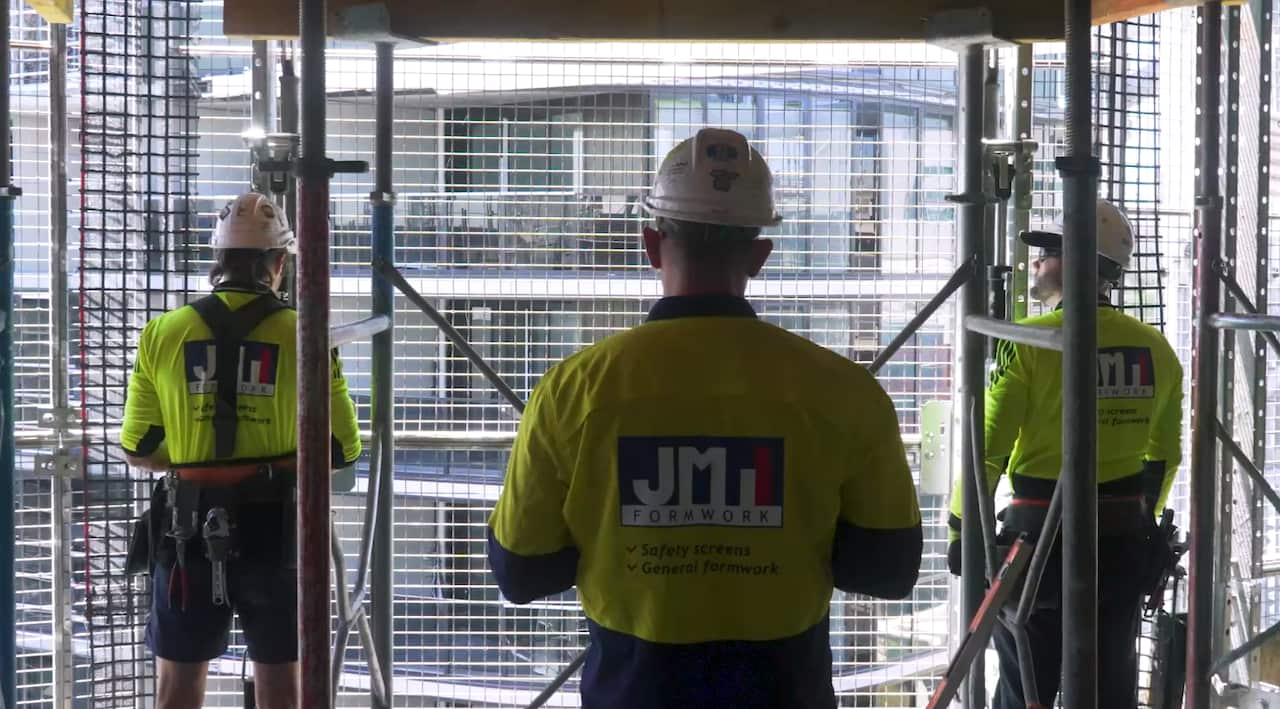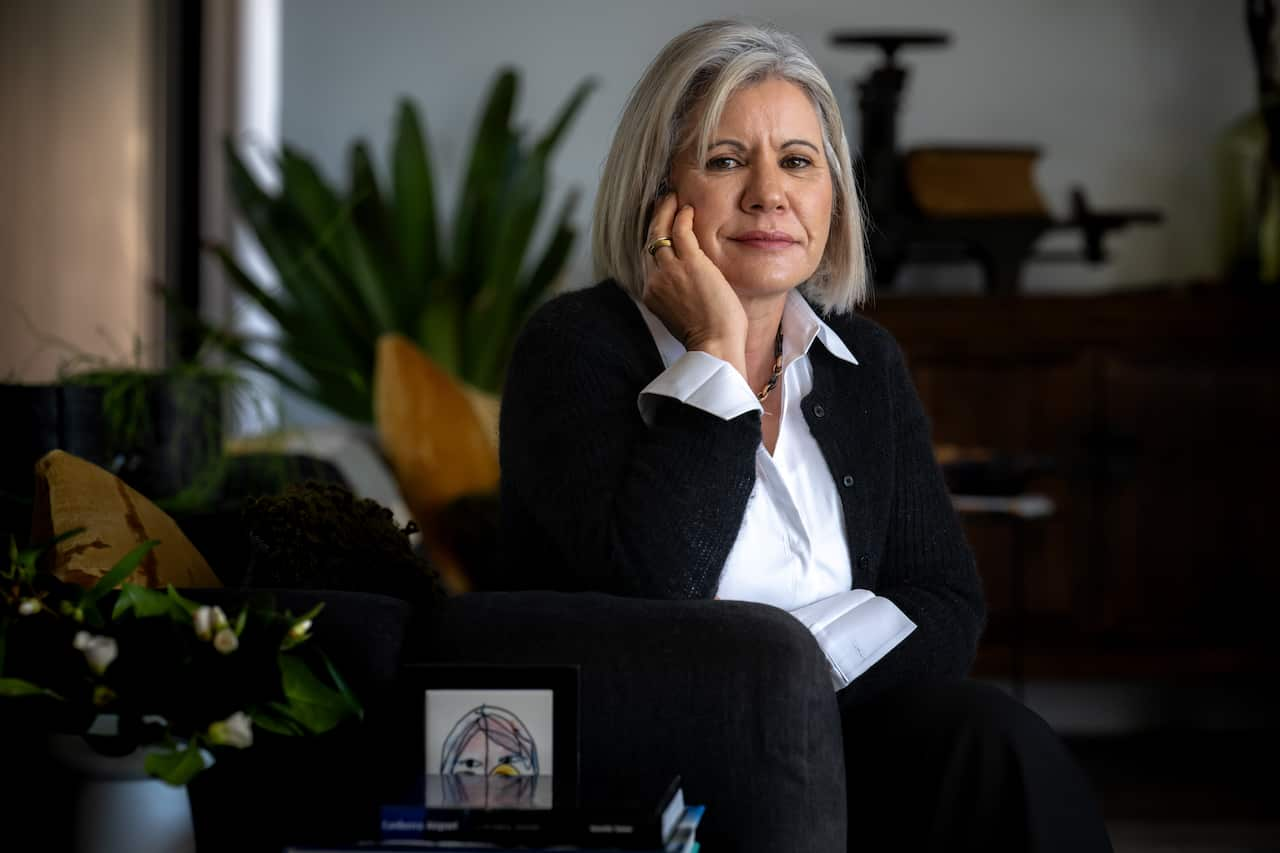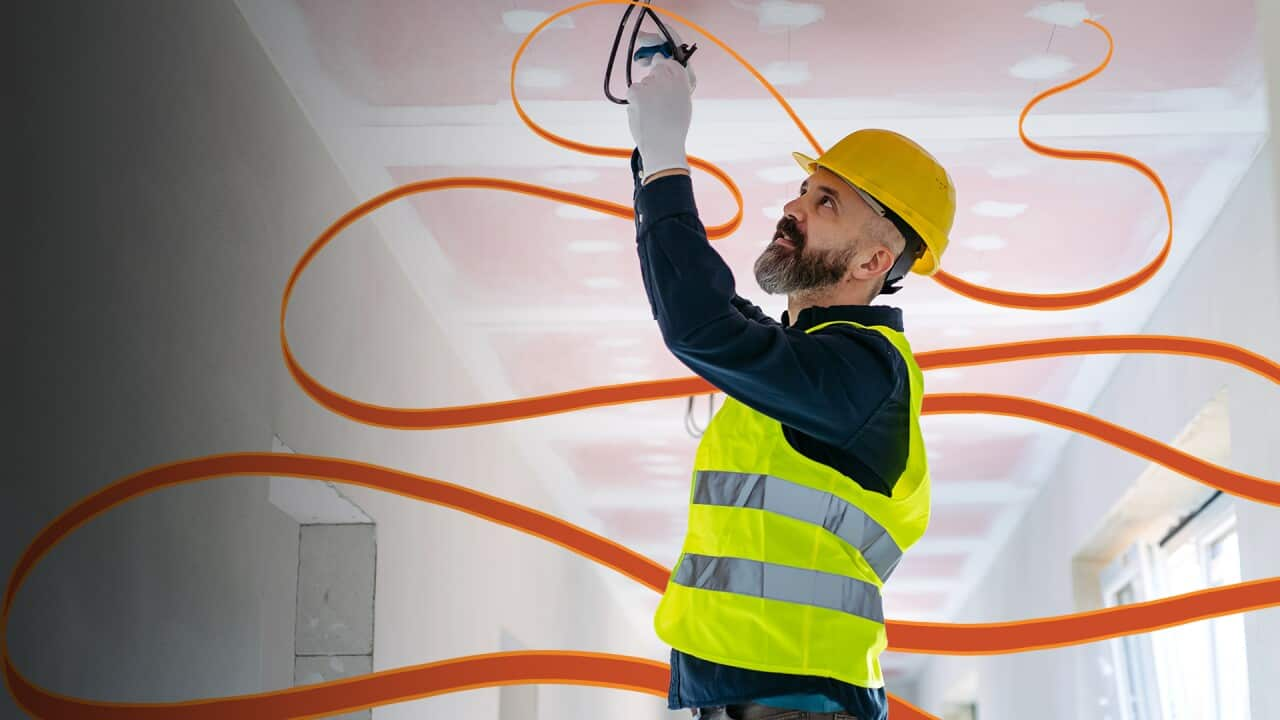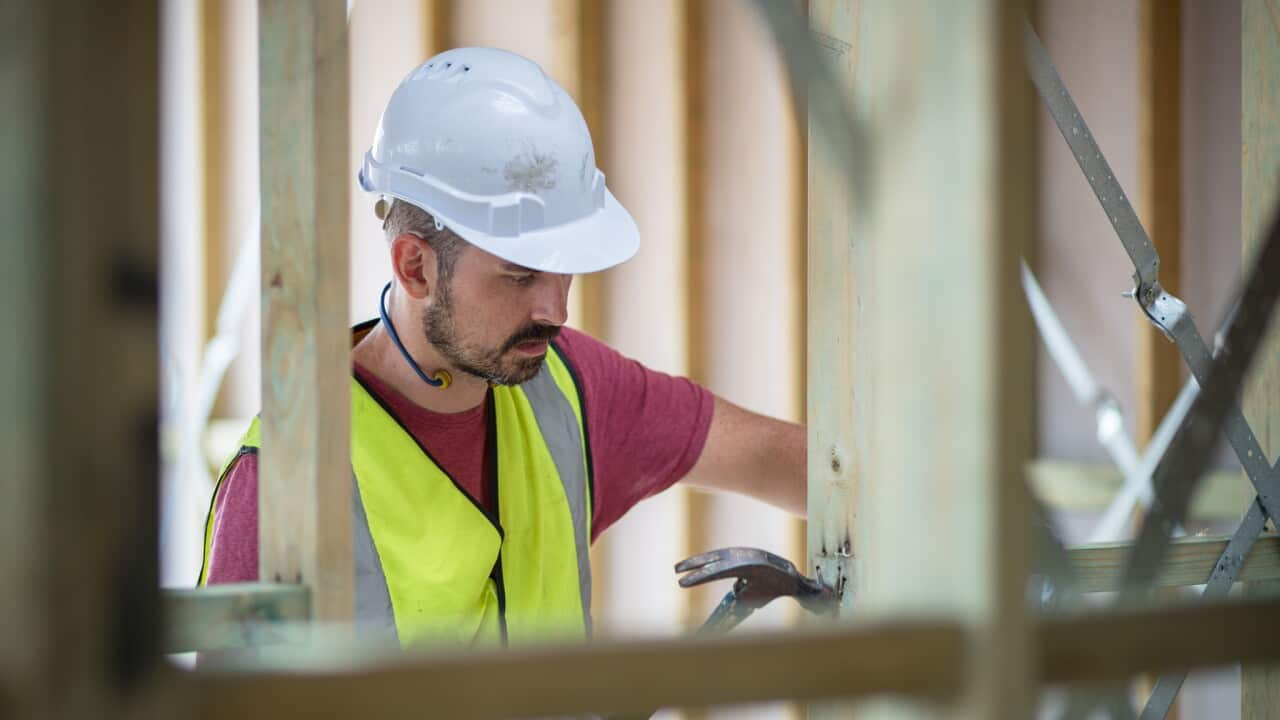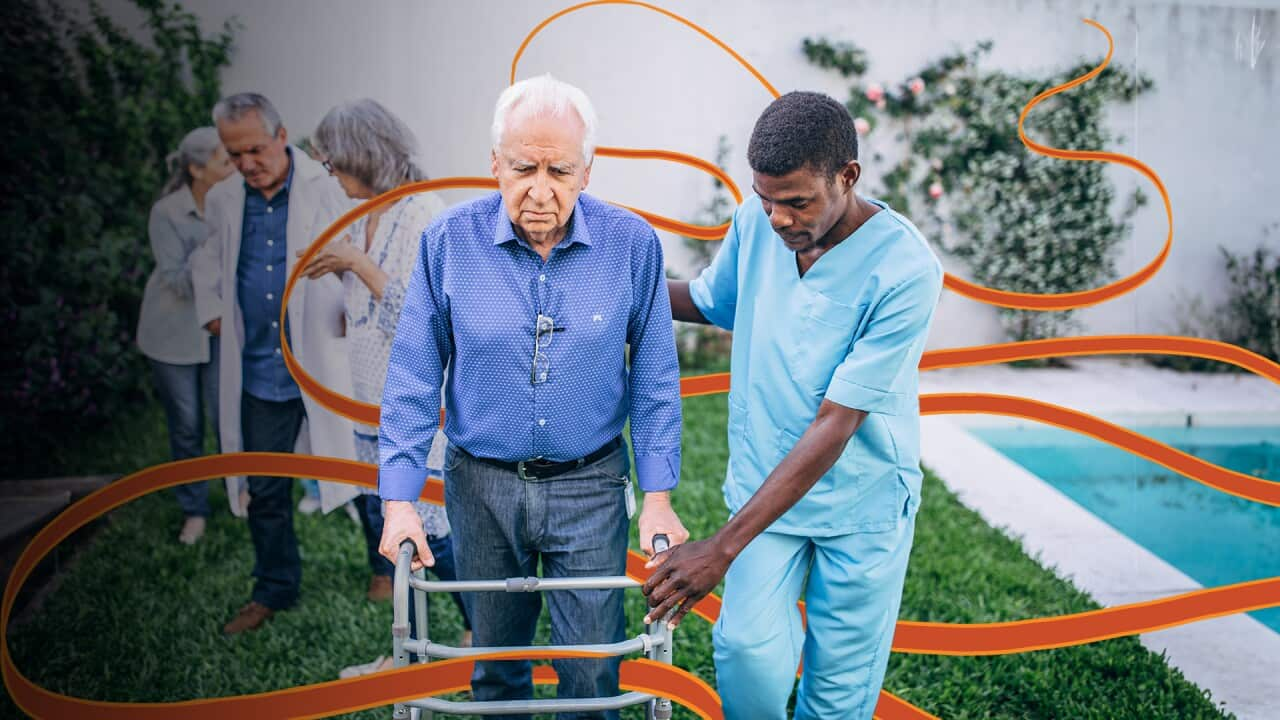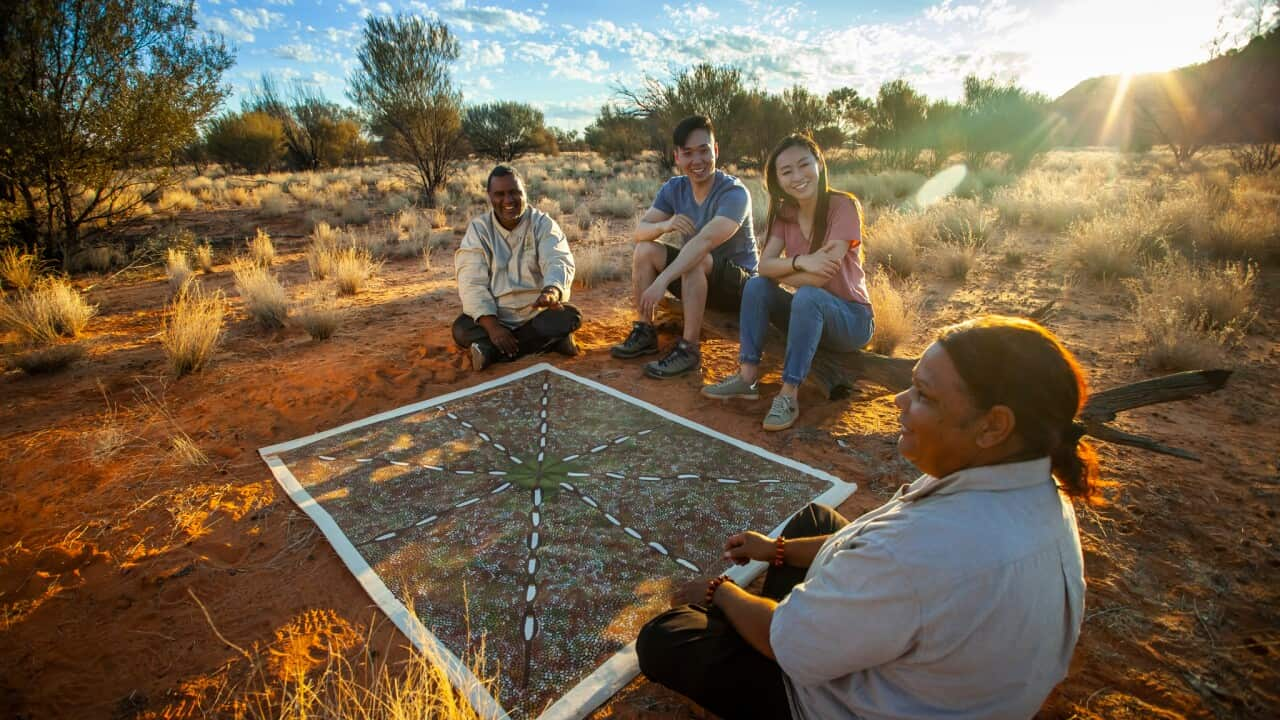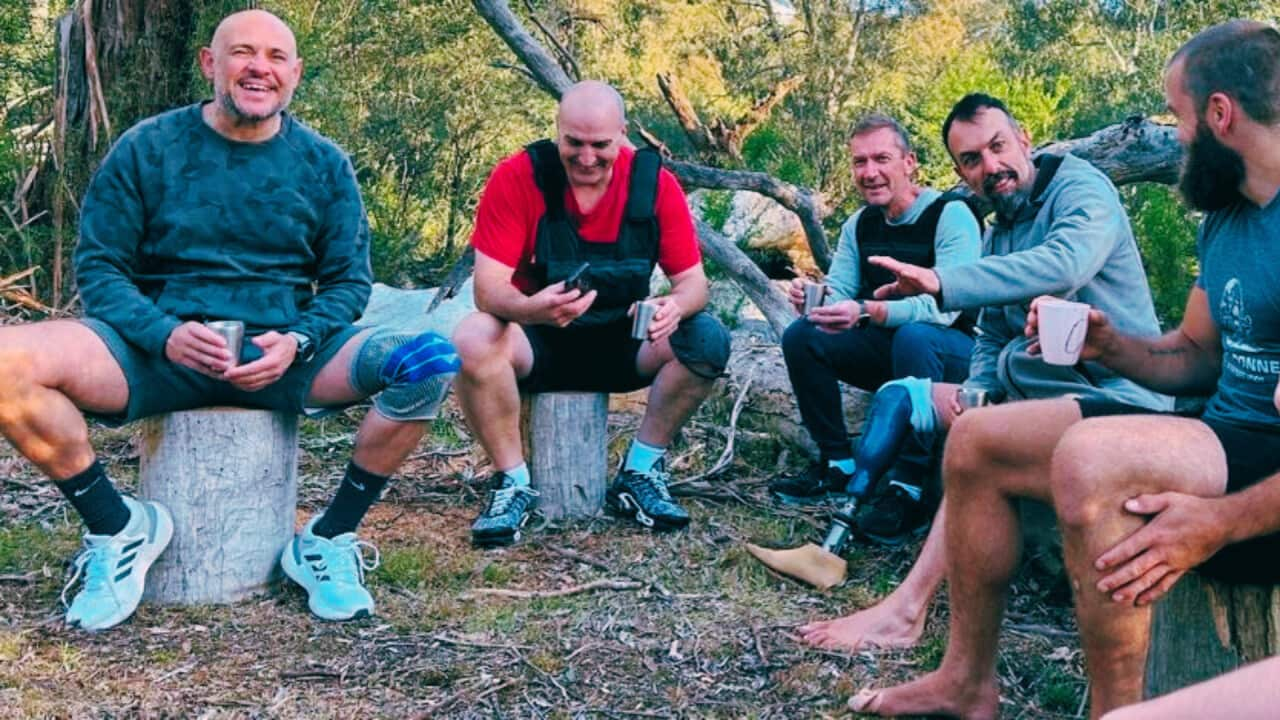This article shares practical tips from Work in Progress, an Australia Explained series exploring the journeys of skilled migrants building meaningful careers in Australia. Listen to all the episodes for more inspiring stories and expert advice.
In this episode, French-born Jean Moreau shares his journey from entry-level labourer to construction business owner. Joined by industry experts, he offers insights and practical tips for building a successful career in the sector.
Australia’s construction sector needs approximately half a million new workers by 2029. Migrant workers make up a vital 20 per cent of Australia’s construction workforce, but their numbers are declining amid a severe labour shortage.
Jean Moreau working on a site.
Why does Australia’s construction industry need more workers?
The industry needs approximately 500,000 new workers by 2029, Denita Wawn, CEO of Master Builders Australia, says the country needs an additional 350,000 to 400,000 workers by 2029 to meet the forecasted demand.
“The labour shortage for the building and construction industry is quite severe, particularly in relation to trades—40 odd trades that you need to build our buildings and our homes around the country,” she says.
How one migrant built a career in construction?
Jean Moreau arrived from France in 2011 to learn English, never expecting to stay long or work in construction. After fruit-picking in Queensland and odd jobs in Sydney, he was encouraged to call a construction company—and that call changed everything.
Starting as a labourer with no qualifications and limited English, Jean spent years sweeping floors, jackhammering, and working long hours.
“I was sweeping the floor for five years, doing jackhammering every day. On Sunday, I was working at my boss’s house. I worked seven days a week for maybe the first six months.”
By gaining experience, completing safety training like the White Card, and later specialising in areas such as formwork, Jean steadily advanced.
Today, he owns a construction company employing 50 people across three states. His story shows how migrants can succeed in the industry through persistence, upskilling, and hard work.
What qualifications or training are needed to enter construction in Australia?
“The strong encouragement to get a step in the door and get labouring work is to ensure that you've got your basic site requirements,” Denita says.
In Australia, everyone on a job site needs a White Card, obtained after a one-day training course on basic safety. Some states and territories also require asbestos and silica awareness training.
There are also short-entry courses specific to roles on or off site.
As people gain experience, many upskill through short courses and specialise in trades such as formwork, scaffolding, or safety screens.
To grow, you need to invest in yourself. Training is essential if you want to run your own company one day.
Jean Moreau
Construction workers working on site.
How have migrants shaped Australia’s construction industry?
Tony Bishop, National General Manager at Brick & Block Careers, says that the Australian construction industry has always been immigrant-driven.
In Australia the construction industry has been built on immigration. The amount of Italians and Greek people and from many other countries, all have come here as either skilled or semi-skilled and found their way and worked their way around.
Tony Bishop
Tony notes that while visa type affects employment pathways, most people can find work through:
- Labouring jobs
- Informal apprenticeships
- Recognition of Prior Learning (RPL)
- Free industry guidance groups and associations like Brick & Block Careers, an organisation offering free guidance on how to engage with the industry and build a career in bricklaying.
Where are the best opportunities for construction jobs in Australia?
Most construction jobs are concentrated in metro areas, with 80 per cent of Australians living within 50 kilometres of the coast. However, regional towns also offer unique opportunities.
In Australia, [a] good tip is if you're not attached to any big city, if you're willing to go in a small town that is getting developed, there's a lot of work out there.
Jean Moreau
This willingness to move has helped many migrants grow their careers faster by going where demand is highest.
Denita is the Chief Executive of Master Builders Australia.
What safety, language, and legal expectations should you know?
Australian construction sites are highly regulated, especially around safety.
Graciete Ferreira, Managing Director of ACT Pacific Formwork and a former migrant herself, notes:
We have very rigorous site safety controls. Migrants must understand they are responsible for their own and others’ safety.
Graciete Ferreira
To work on any construction site, a White Card is mandatory. This nationally recognised accreditation is earned by completing a one-day training course on basic site safety. Depending on the state or territory, workers may also be required to complete additional training, such as asbestos awareness, silica awareness, or specific equipment licences (for example, scaffolding, forklifts, or cranes).
Workers are also protected under Australia’s Work Health and Safety (WHS) laws, which require employers to provide safe workplaces. Employees, in turn, must follow site rules, use protective equipment, and immediately report hazards. Breaches of safety laws can result in fines, dismissal, or in serious cases, criminal charges. English skills are also critical—not just for integration, but for survival. Construction sites are fast-paced and can be dangerous if instructions are misunderstood.
Jean Moreau stresses the importance of language skills:
“If someone yells, ‘Watch out!’ and you don’t understand, you can get badly hurt or killed.”
For those still improving their English, many TAFE institutions and community colleges offer workplace English courses designed for migrants in construction and trades. Some employers also support language training to help staff meet communication and safety standards.
Additionally, all workers must hold the right visa with work entitlements. Many trades also require licences issued by state or territory regulators (for example, electrical and plumbing licences). It’s important to check with the relevant authority in your state before starting work.
Graciete Ferreira, the Managing Director of ACT Pacific Formwork Credit: Elesa Kurtz/Canberra Times
Which trades are most in demand in construction?
Denita highlights carpenters, plumbers, electricians, tilers, farm workers, and bricklayers as the most in-demand trades.
Each trade has different physical demands, training needs, and licensing requirements.
For example, formwork involves heavy machinery and requires specialised safety certifications.
Tony advises researching each trade carefully to find one that matches your strengths and long-term goals.
How can you find the right career path in the construction industry?
Jean believes in giving chances to others at his company, just as someone once gave him his first shot.
“I’ve been there. I hire people from everywhere: Australia, the Pacific, Europe, South America. Everyone has a story.”
But he is clear on what it takes to succeed.
“You’ve got to work. People say you make good money here, but... it’s hard work—but it pays off.”
Resources and practical tips for migrants in construction
If you’re considering a career in Australia’s construction industry, here are some key steps and resources to help you get started:
- Check your work rights: Confirm your visa details and conditions using Visa Entitlement Verification Online (VEVO).
- Get your White Card: Complete the mandatory safety induction via an approved provider. Learn more from Safe Work Australia.
- Explore job opportunities: Entry-level roles and information on demand can be found on Jobs Hub – Construction.
- Research career pathways: The Construct Your Career guide from Master Builders Australia outlines roles, qualifications, and average wages.
- Upskill with training: Search for short courses, apprenticeships, or nationally recognised qualifications through Registered Training Organisations (RTOs).
- Check licensing rules: Trades such as plumbing and electrical require licences. Find out more through your state or territory licensing authority.
- Improve your English: Access workplace English courses through your local TAFE.
- Consider regional work: Regional towns often have high demand and faster career progression opportunities. Explore options on Australian Apprenticeships Pathways.
Disclaimer: This article presents one example of a migrant’s journey into the construction industry. The information provided is accurate at the time of publishing but may change over time. Individuals interested in working in construction should seek tailored advice from official sources, such as the Australian Government Department of Employment and Workplace Relations, Master Builders Australia, and relevant state or territory training authorities and professional associations. 
